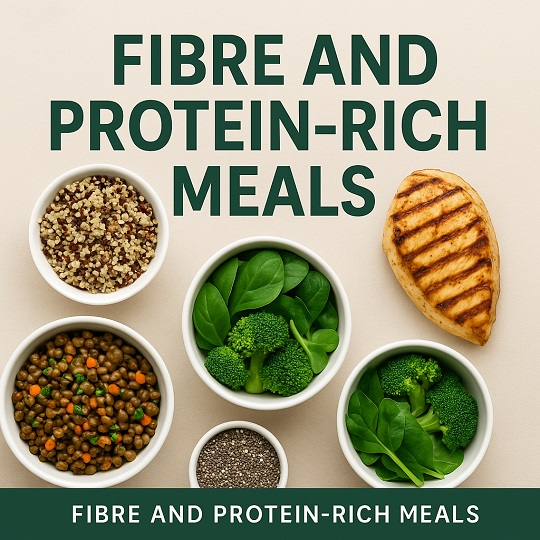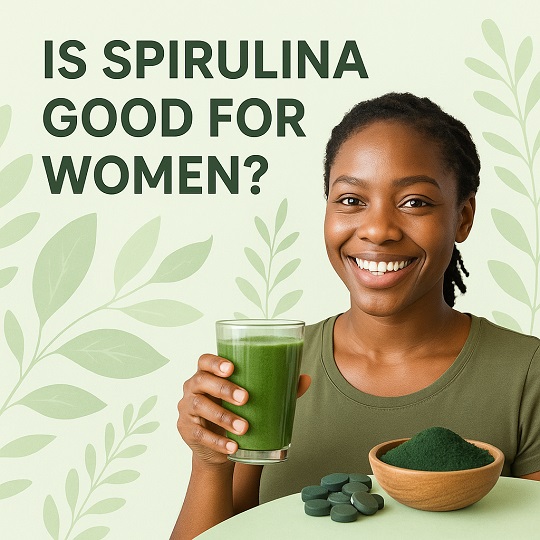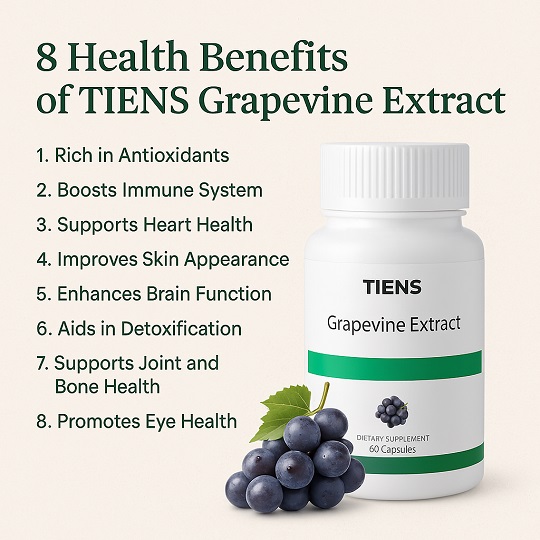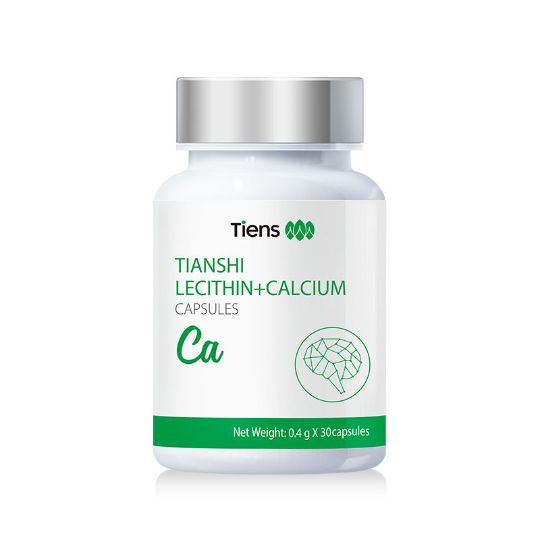
Fibre and Protein-Rich Meals: A Complete Guide to Better Health and Nutrition
Fibre and Protein-Rich Meals. If you’re looking to improve your overall health, support weight loss, build muscle, or manage blood sugar levels, fibre and protein-rich meals are your best ally. These two essential nutrients are vital for digestive health, satiety, muscle development, and long-term disease prevention.
In this article, we’ll explore the benefits of fibre and protein, provide examples of high-fibre and high-protein meals, and share tips for incorporating them into your daily routine. Whether you’re planning meals for weight loss or looking to boost energy naturally, this guide will help you eat smarter.
Why Fibre and Protein Matter in Your Diet
What Is Fibre?
Dietary fibre is a type of carbohydrate that the body can’t digest. Unlike other carbs, fibre passes through the digestive tract relatively intact, helping to maintain a healthy gut. There are two main types:
- Soluble fibre: dissolves in water to form a gel-like substance. Found in oats, beans, and some fruits.
- Insoluble fibre: adds bulk to stool and aids movement through the digestive system. Found in whole grains and vegetables.
What Is Protein?
Protein is an essential macronutrient made up of amino acids. It’s necessary for building and repairing muscles, producing enzymes and hormones, and supporting immune function.
Benefits of Fibre and Protein-Rich Meals
1. Enhanced Satiety and Weight Management
Fibre slows digestion and keeps you full longer, reducing cravings and unnecessary snacking. Protein increases satiety hormones like peptide YY, which helps regulate appetite.
2. Muscle Maintenance and Growth
Protein is crucial for maintaining lean muscle mass, especially as we age. Post-workout meals rich in protein support muscle recovery and growth.
3. Blood Sugar Control
Fibre helps slow the absorption of sugar, preventing spikes and crashes in blood glucose. Protein also stabilizes blood sugar when paired with carbohydrates.
4. Improved Digestion and Gut Health
Fibre promotes regular bowel movements and nourishes healthy gut bacteria. Insoluble fibre, in particular, prevents constipation and supports colon health.
5. Heart Health and Reduced Risk of Chronic Disease
Soluble fibre can help lower LDL (“bad”) cholesterol. Combined with protein, it supports cardiovascular health and reduces the risk of diabetes and obesity.
Top Fibre and Protein-Rich Foods
High-Fibre Foods
- Legumes: lentils, black beans, chickpeas
- Whole grains: oats, quinoa, barley, brown rice
- Vegetables: broccoli, carrots, Brussels sprouts
- Fruits: raspberries, pears, apples (with skin)
- Seeds: chia seeds, flaxseeds
High-Protein Foods
- Lean meats: chicken breast, turkey, lean beef
- Fish: salmon, tuna, cod
- Eggs: whole eggs or egg whites
- Dairy: Greek yogurt, cottage cheese, cheese
- Plant-based: tofu, tempeh, edamame, seitan
7 Fibre and Protein-Rich Meal Ideas
Here are some balanced meal ideas packed with both protein and fibre:
1. Grilled Chicken and Quinoa Bowl
- Protein: grilled chicken breast
- Fibre: quinoa, black beans, avocado, mixed vegetables
2. Lentil and Vegetable Stir-Fry
- Protein: lentils and tofu
- Fibre: broccoli, carrots, bell peppers, whole-grain brown rice
3. Oats and Chia Seed Breakfast Bowl
- Protein: Greek yogurt or plant-based protein powder
- Fibre: rolled oats, chia seeds, berries, flaxseeds
4. Salmon with Sweet Potato and Greens
- Protein: baked salmon
- Fibre: roasted sweet potato, kale, steamed broccoli
5. Turkey and Black Bean Chili
- Protein: lean ground turkey, black beans
- Fibre: beans, tomatoes, peppers, onions
6. Tofu and Quinoa Stuffed Peppers
- Protein: tofu, quinoa
- Fibre: bell peppers, corn, black beans, salsa
7. Hard-Boiled Eggs and Veggie Wrap
- Protein: eggs, hummus
- Fibre: whole wheat tortilla, spinach, cucumber, tomato
Tips for Incorporating More Fibre and Protein Into Your Diet
1. Start Your Day Right
Begin with a high-protein, high-fibre breakfast like oatmeal with chia seeds and Greek yogurt. This curbs hunger and keeps energy stable.
2. Add Beans and Lentils to Meals
Beans are a double win — packed with both fibre and protein. Add them to soups, salads, and stir-fries.
3. Snack Smart
Choose protein and fibre-rich snacks like:
- Roasted chickpeas
- Greek yogurt with berries
- Nut butter on whole grain toast
- Hard-boiled eggs with veggies
4. Swap Refined Carbs
Replace white bread, pasta, and rice with whole grain versions like brown rice, whole wheat pasta, or quinoa.
5. Include Vegetables in Every Meal
Boost fibre intake by adding vegetables to omelettes, sandwiches, pasta, and smoothies.
6. Try Plant-Based Protein
Incorporate plant proteins like lentils, edamame, and tofu into your weekly rotation for diversity and extra fibre.
Common Mistakes to Avoid
- Increasing fibre too quickly: This can cause bloating or gas. Introduce high-fibre foods gradually and drink plenty of water.
- Ignoring portion sizes: Even healthy proteins like nuts and cheese can be calorie-dense. Stick to balanced servings.
- Skipping meals: Consistency helps maintain energy and prevents overeating later in the day.
Final Thoughts
Fibre and protein-rich meals are a cornerstone of a balanced, healthful diet. From improving digestion and muscle growth to supporting long-term weight management and disease prevention, these nutrients work together to optimize your well-being.
Start simple: swap out refined grains, include more legumes, and make veggies and lean protein staples on your plate. Whether you’re meal-prepping, managing your weight, or simply eating cleaner, a fibre and protein-forward approach is one of the smartest choices you can make for your body.
References
- U.S. Department of Agriculture (USDA).
FoodData Central. Retrieved from: https://fdc.nal.usda.gov/ - World Health Organization (WHO).
Healthy diet factsheet. Retrieved from: https://www.who.int/news-room/fact-sheets/detail/healthy-diet - Harvard T.H. Chan School of Public Health.
The Nutrition Source – Protein. Retrieved from: https://www.hsph.harvard.edu/nutritionsource/what-should-you-eat/protein/ - Mayo Clinic.
Dietary fiber: Essential for a healthy diet. Retrieved from: https://www.mayoclinic.org/healthy-lifestyle/nutrition-and-healthy-eating/in-depth/fiber/art-20043983 - National Institutes of Health (NIH).
Protein and muscle building: The importance of amino acids. Retrieved from: https://ods.od.nih.gov/factsheets/Protein-Consumer/ - American Heart Association (AHA).
Fiber and Heart Health. Retrieved from: https://www.heart.org/en/healthy-living/healthy-eating/eat-smart/nutrition-basics/fiber-and-heart-health - Cleveland Clinic.
High-Fiber Foods You Should Be Eating. Retrieved from: https://health.clevelandclinic.org/11-high-fiber-foods-to-add-to-your-diet/ - British Nutrition Foundation.
Protein: Why it’s important and how much you need. Retrieved from: https://www.nutrition.org.uk/healthy-sustainable-diets/nutrients/protein.html - Academy of Nutrition and Dietetics.
How to get more fiber in your diet. Retrieved from: https://www.eatright.org/health/wellness/preventing-illness/how-to-get-more-fiber-in-your-diet - Johns Hopkins Medicine.
The Benefits of Fiber in Your Diet. Retrieved from: https://www.hopkinsmedicine.org/health/wellness-and-prevention/the-benefits-of-fiber-in-your-diet





